
If I were president of video games™, I’d make sure every computer has a copy of Heroes of Might and Magic 3 installed in it. And I’d put our greatest minds towards an even more important goal: get it to run on anything with a screen.
Heroes of Might and Magic 3 is an amazing game. Everything just went right with this game. It’s endlessly replayable, it has deep and complex mechanics, it offers hilariously imbalanced yet timeless strategies, and of course, it’s got a dedicated community that keeps the game alive long after New World Computing closed its doors. The game is one of the most important games of all time, and everyone should play it at least once.
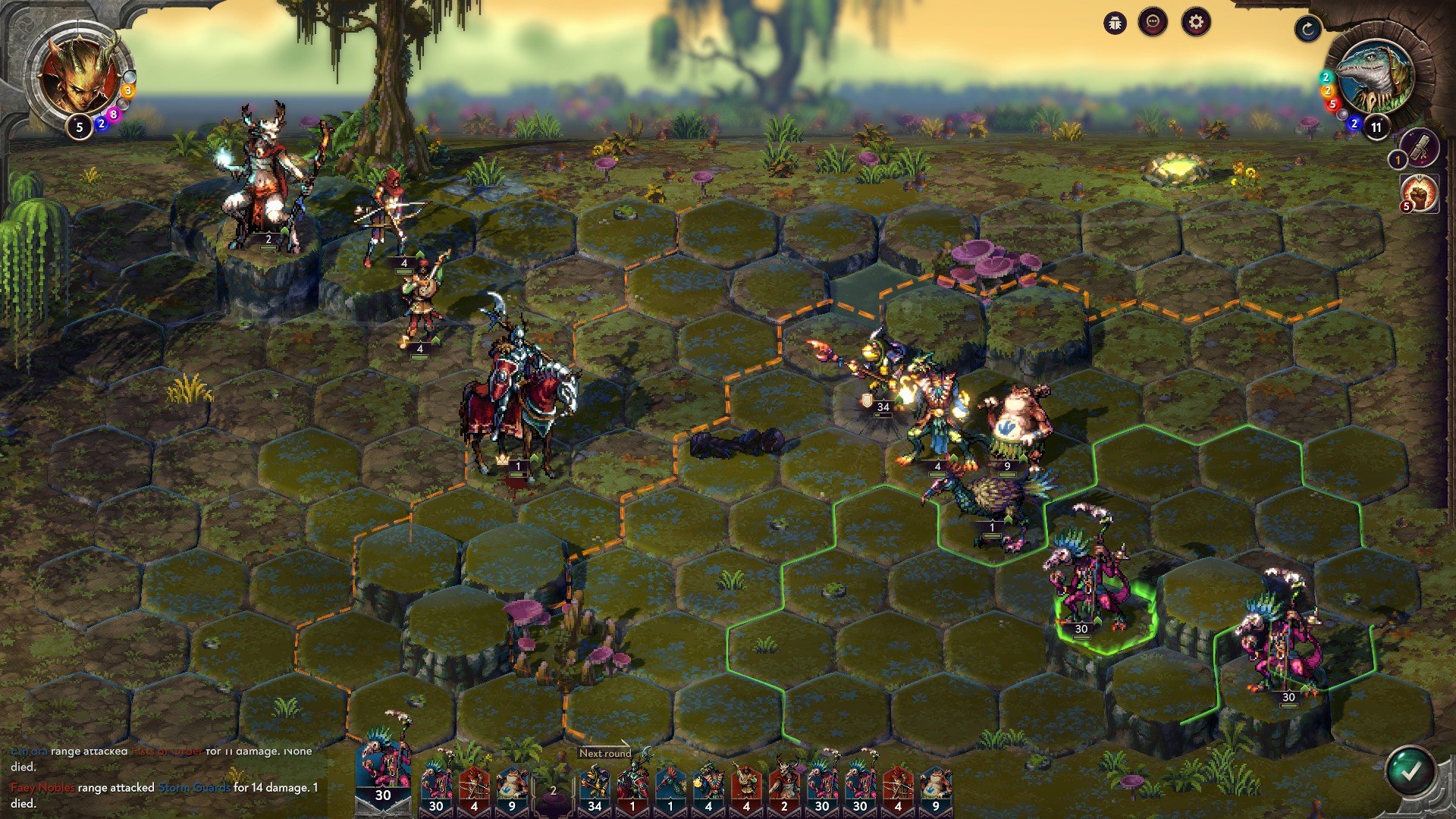
But as awesome as the game is, it’s not a new game. And the best part of our hobby is enjoying and playing games from both today and yesteryear. Enter Songs of Conquest, the first game by indie developer Lava Potion. Composed by four “games and TV-industry veterans with a passion for […] old school strategy titles,” this first foray harkens back to those amazing turn-based strategy games that defined many of our childhoods and helped develop our imaginations.
And boy does it hit all the right notes. Songs of Conquest is a turn-based strategy game with all the fixings of a classic Heroes title. It’s got movement points, things to pick up scattered throughout the adventure map, unit stacks, a turn-based battle system, city building, and a ton of other systems that made those games so fun. And it’s all presented in beautiful pixel art layered on top of a 2.5D backdrop. For me, it’s the art style that’s got me so addicted to the game. But beauty is only skin deep, as they say. There’s more to this title than a mere homage, and that’s what we’re going to dig into in this edition of MMO Burnout.
Not just another clone
Just because this game takes heavy inspiration from HoMM doesn’t mean that it’s a carbon copy. Songs of Conquest stands on its own with its own unique systems, and there are major strategic differences between it and the other Heroes game. When I first started, I came in expecting to play Heroes of Might and Magic, that was not the case at all. There are so many key differences in this game that really make it a completely different game.
The most obvious changes are immediately noticeable and have major implications on the tactical gameplay. First, there’s no town screen. Instead, your town is built up in the adventure map, so as the game progresses, the town begins taking up more spaces. There’s a caveat, though: Not all the available buildings can be built in a settlement. Each settlement gets plots of land ranging from small to medium to large. And while smaller buildings can be built on larger plots, the opposite isn’t possible. So city planning needs to be considered for every town. Are you planning to rush to your highest tier unit with one settlement? Well, prepare to make some sacrifices.
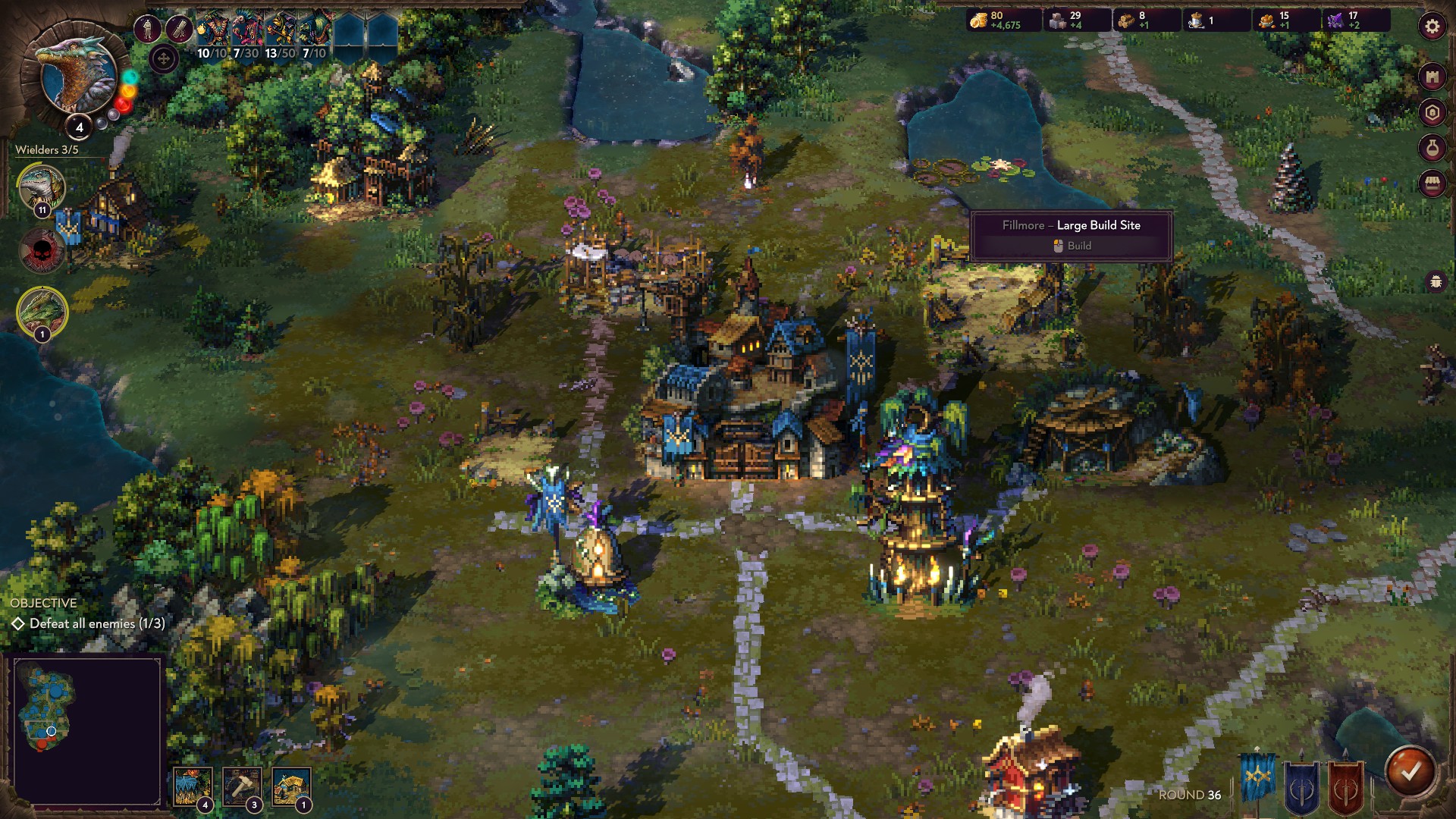
Secondly, the player has access to only as many “wielders” (the game’s equivalent to the heroes of the Heroes games) as they have towns. So if a you have only one small town, you can have only one hero. If you increase the size of one town, it’ll go up to two recruitable heroes. As players conquer more settlements, they’ll be able to access more heroes as well. And wielders who fall in battle have a “respawn timer” before they can return.
Finally, there’s army slots. Every time a wielder gains a level, you’ll choose one of three special skills. The third skill will always be an extra army slot. So every level up, players need to leverage whether they want a larger army or a well-supported small army.
These three major changes shake up the entire pace of the game. Veterans of the genre are very well aware of how quickly players develop within the first seven rounds. The best players can have their win conditions online as early as the end of the first week. But this depth means that there are so many things players can do for their opening moves. And for many players, that can be an intimidating endeavor. Songs of Conquest opts to “ramp” players up as the match progresses. And because of the limits imposed on space, movement, and army size, the early game is both important and approachable.
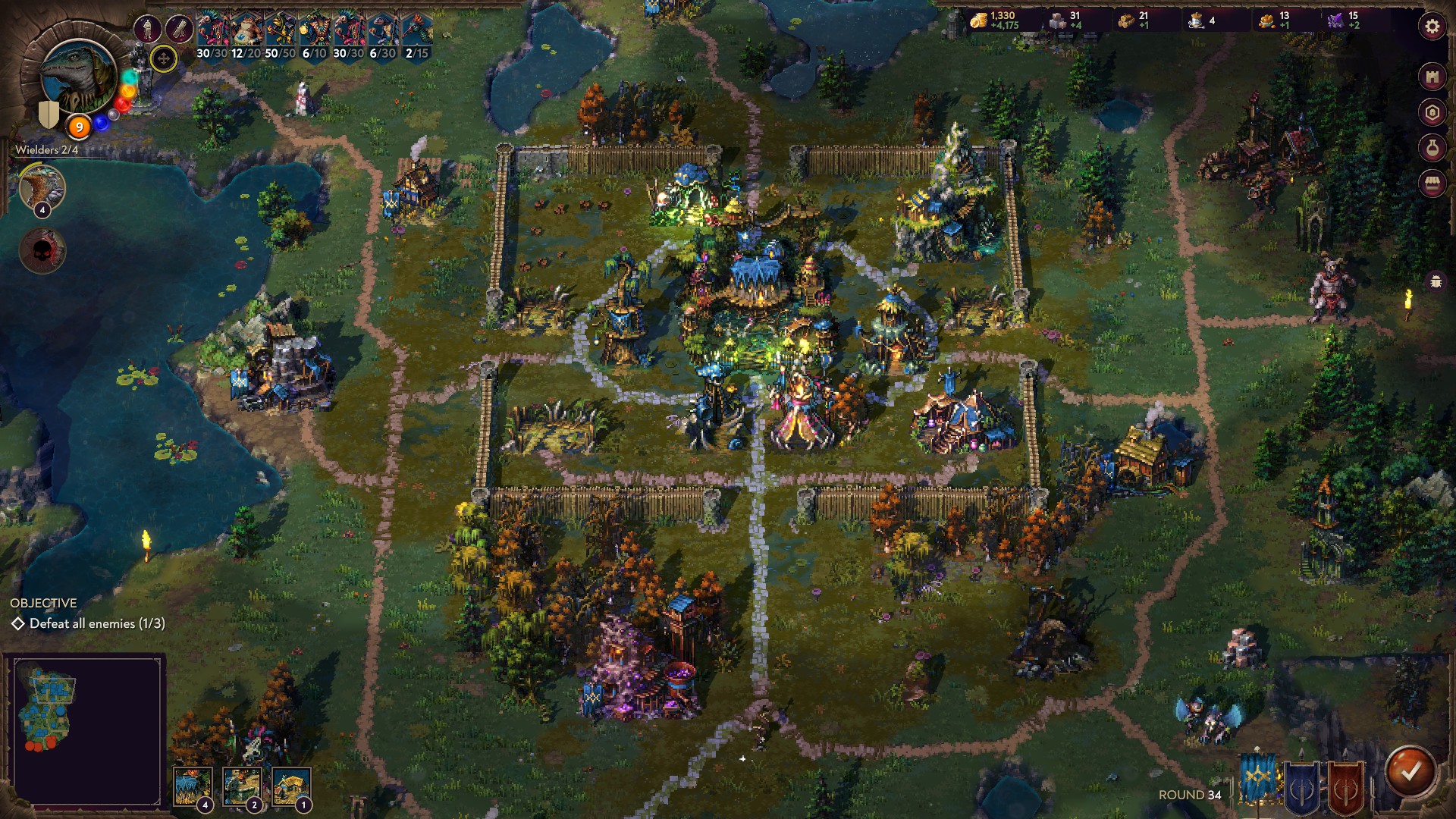
And it’s the approachability and depth that I really want to emphasize here. Players will still need to make big important decisions, but there will be fewer of them to make in the early game. Games will play out differently than HoMM. And while there are some critical parts that really show how much this game is like its inspiration, it does so much to make it a completely different entity that co-exists with it, rather than act as some kind of replacement.
SoC also makes some crucial balance changes to the spells wielders can cast mid-fight. Essence, the game’s mana, is generated based on the army composition. Depending on which troops are available, there are five types of essence, arcana, creation, destruction, chaos, and order. Each unit is aligned to a specific essence, and every combat round, players generate a certain amount based on what’s fielded. The essence is then used to cast spells. Some spells need only one type, while others need two. So the depth once again falls on unit composition and careful planning around the available resources.
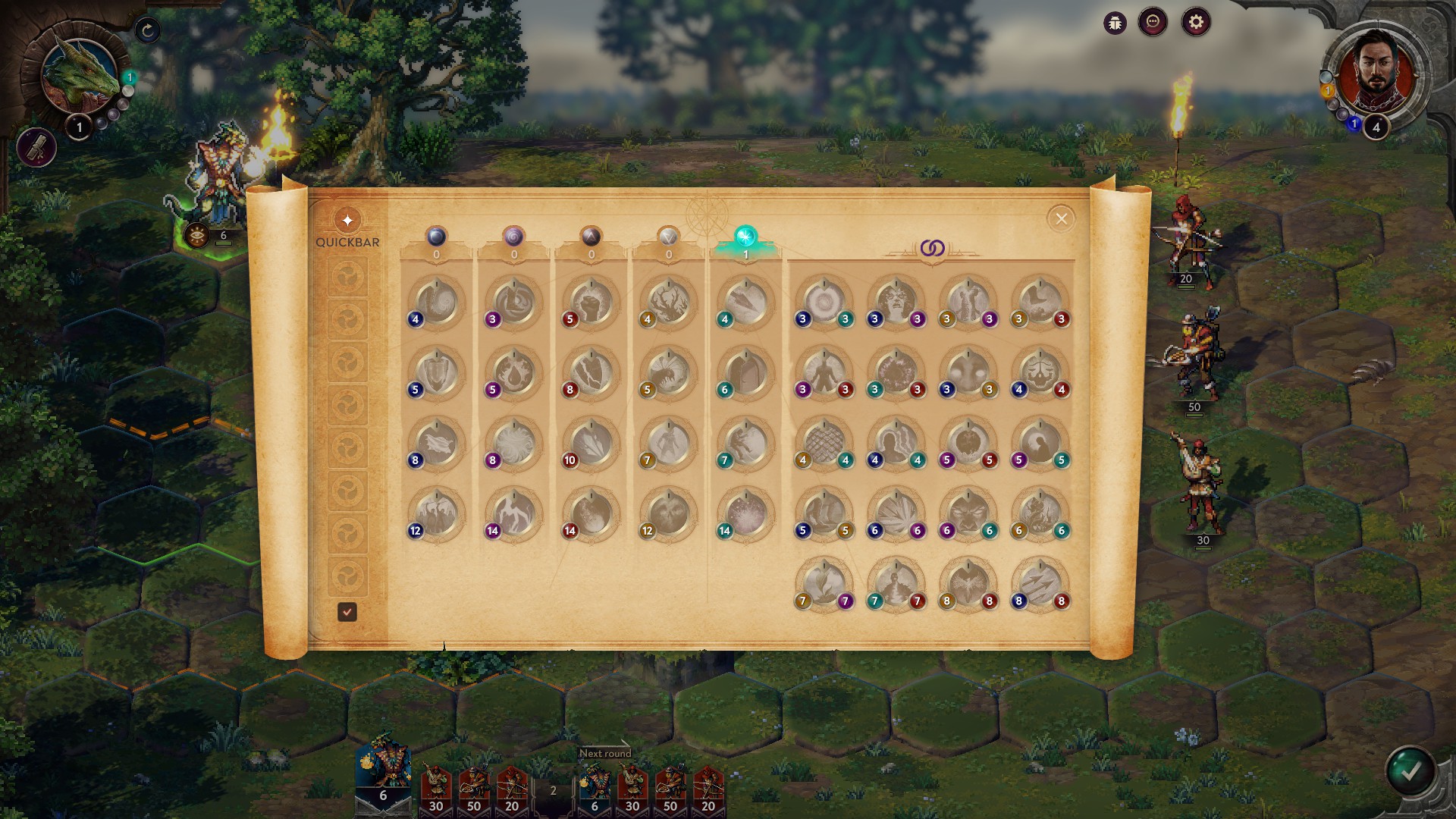
And while they’re still impactful, they won’t be spells that instantly win fights. I haven’t had a chance to dive into the spells yet, but they’re mainly along the lines of direct damage, mitigation, essence generation, and debuff. If players want to win fights, they’ll need to take advantage of careful movement, positioning, essence management, and risk assessment.
My favorite part of HoMM-style combat is fighting for position and getting your troops in advantageous spots to win combat. And SoC nails the aesthetic while building on the systems that make these genres distinct. What’s got to be one of my most favorite feature is the addition of attacks of opportunity from Dungeons and Dragons 3rd edition. That’s right: Units can threaten squares around them. And attempting to move while in those threatened squares will be met with punishment. Some ranged units also have the “ambush” skill, which means enemies that move into their attack range will have to deal with a free attack.
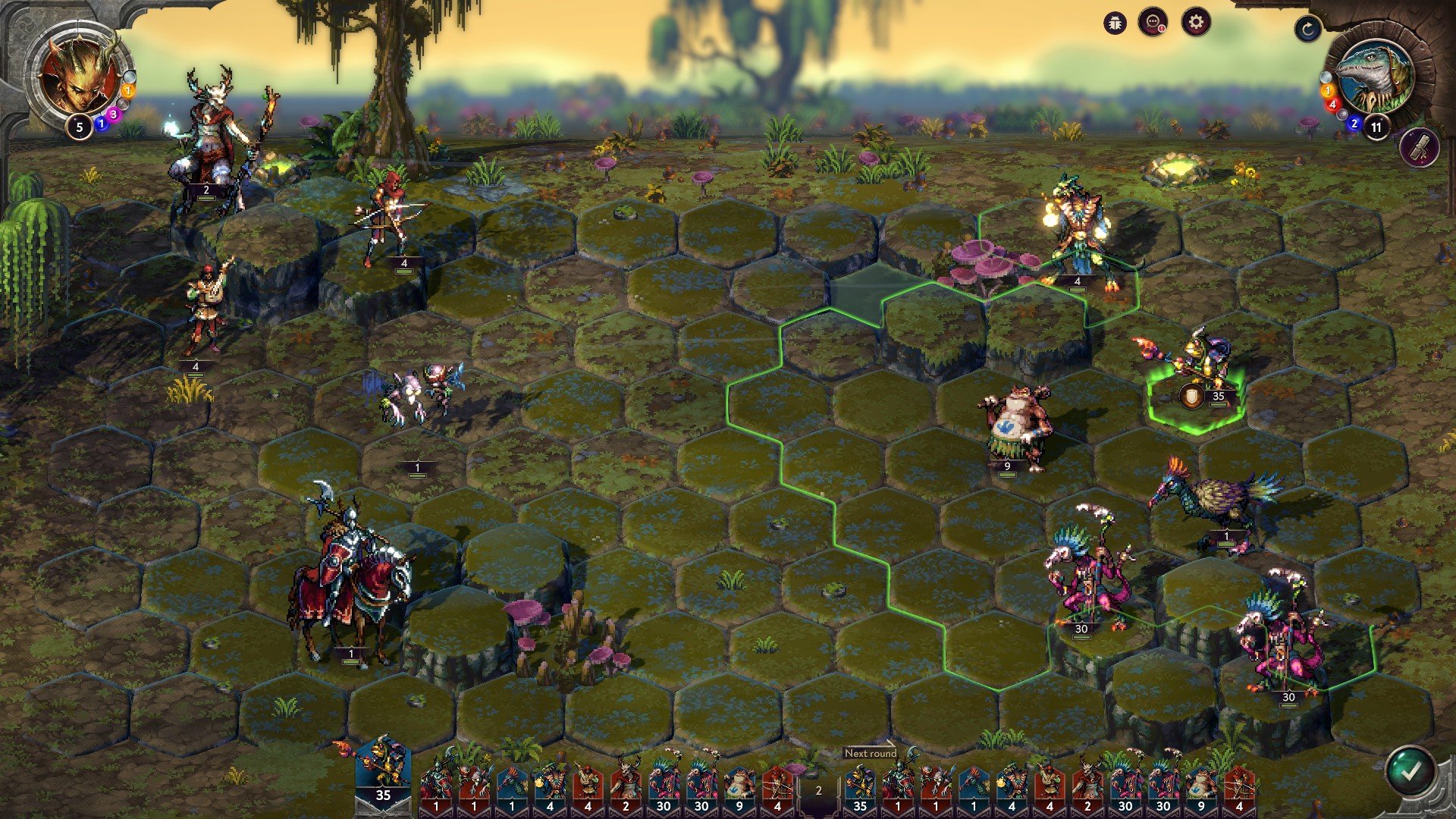
I personally love this addition, but I’ve got friends who don’t like how it makes combat “sticky.” But it makes combat feel less like Heroes of Might and Magic and more like Songs of Conquest. I like how there’s more commitment in the positioning aspect. But don’t let attacks of opportunities be the reason to miss out on this game. This game allows for a variety of playstyles, and the four factions encourage specific ones.
The four factions
The Rana, Arleon, Barya, and The Barony of Loth are the four factions in Songs of Conquest, and I have a hard time deciding which one I like the most. I’ve been spending a lot of time playing the Rana, though. They are a reptilian race of frogs, turtles, and dragons. (Dragons are reptiles, natch.) And I really enjoy their playstyle; their troops feature passives that generate essence and units that provide buffs by being near each other. They also feature some big power spikes when the units are upgraded. And dragons are always awesome! Players who enjoy positioning and troop movement will enjoy this faction.
Then we have the Barony of Loth. I love them. They’re the undead faction, the remnants of an ancient empire that returned to life because they made an eternal oath to always protect the queen! That’s some pretty cool lore. And they have the ability to raise their dead units to come back as zombies at the end of every combat. They’ve also got some hard hitting units, including the ferocious legion – a single monster composed of a literal legion of troops (because in the game’s lore, the legions of the fallen Empire of Aurelia are buried together). Instead of blood and guts, they go for the whole spectral fire aesthetic, so it’s not gross. They’re a hard-hitting faction that provides lots of value in spite of a slow early game.
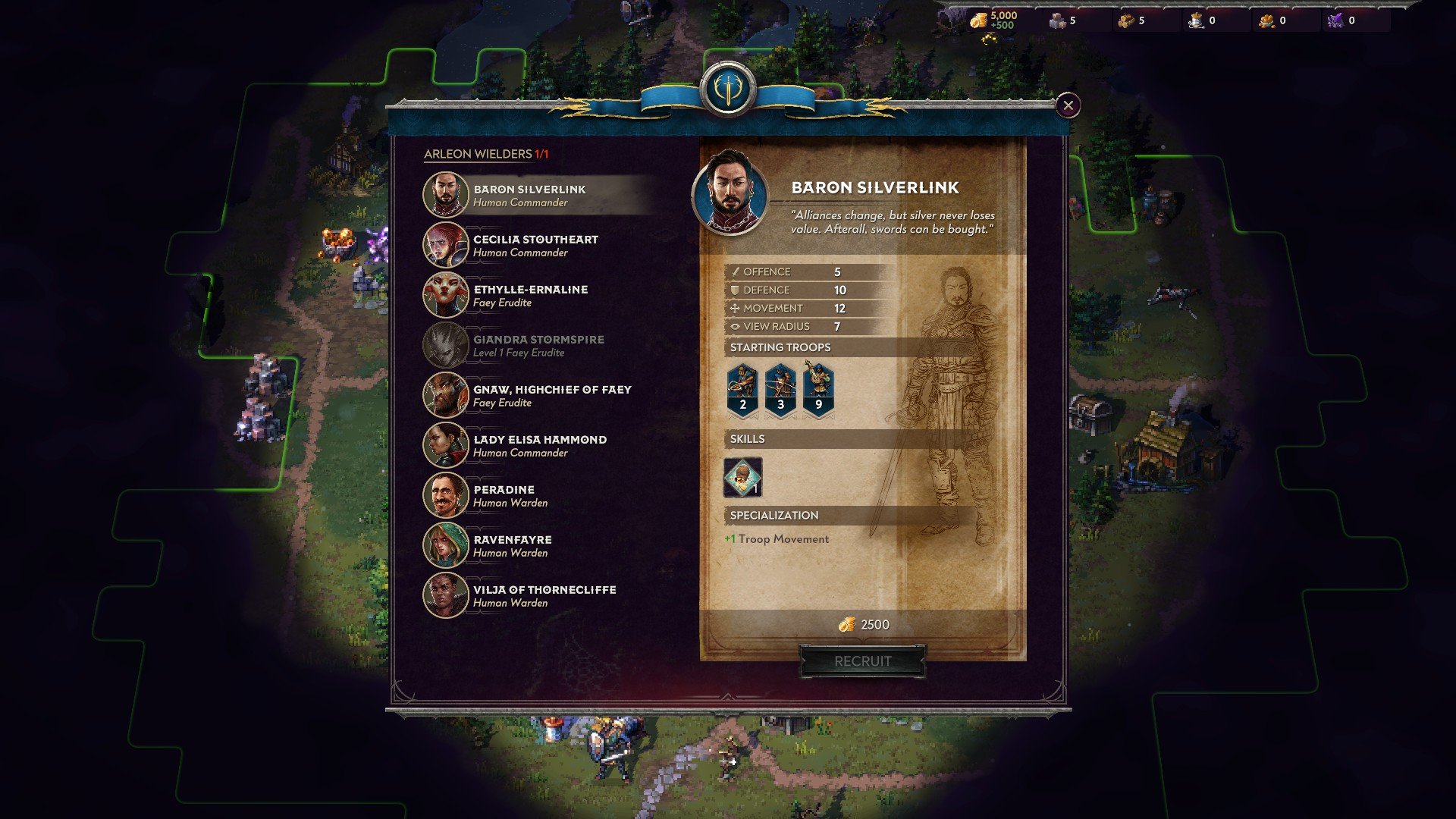
Then we have the mix of humans and faye in the Arleon faction. Bound together by a sacred oath to each other, this faction is composed of knights in shining armor, fairies, and creatures pulled from A Midsummer Night’s Dream. Thanks to its two ranged attackers and heavily armored units, those who like more defensive playstyles will enjoy this faction.
The faction I’ve had the least playtime with is Barya, but they’re steampunk wizards. I’m sure that’s more than enough to get people interested. They have a focus on magic and technology. But in the lore, they’re very much focused on making and honoring contracts – even going as far as dying in order to complete their contracts.

The big takeaway here is that there’s something for everyone. And what’s really cool about the factions is how they’re coded in the lore. The undead aren’t bad guys, nor are they bound against their will. This faction made an oath to their queen and kingdom in life, and return to honor it. The Rana are a faction trying to regain their former glory as the most powerful creatures. Arleon is a human kingdom with ancient ties to the faye; it’s reeling from the loss of the most powerful human empire in the world’s history. And finally, the Barya are all about contracts. They’re loyal to the contracts they make first, and even if they’re in the wrong, the contract comes first. Nobody is The Bad Guy; rather, they’re separate factions with different end goals. And their conflicts stem from how those goals intersect. It’s a well-told story in an unexpected genre.
If you yearn for those halcyon days of Heroes of Might and Magic and classic computer games, those games are still there. But if you want something a little newer to play in between MMOs, Songs of Conquest might be your jam.
 Are you burned out on MMOs? It happens. But there are plenty of other titles out there with open worlds, progression, RPG mechanics, and other MMO stalwarts. Massively OP’s MMO Burnout turns a critical eye toward everything from AAA blockbusters to obscure indie gems.
Are you burned out on MMOs? It happens. But there are plenty of other titles out there with open worlds, progression, RPG mechanics, and other MMO stalwarts. Massively OP’s MMO Burnout turns a critical eye toward everything from AAA blockbusters to obscure indie gems.














